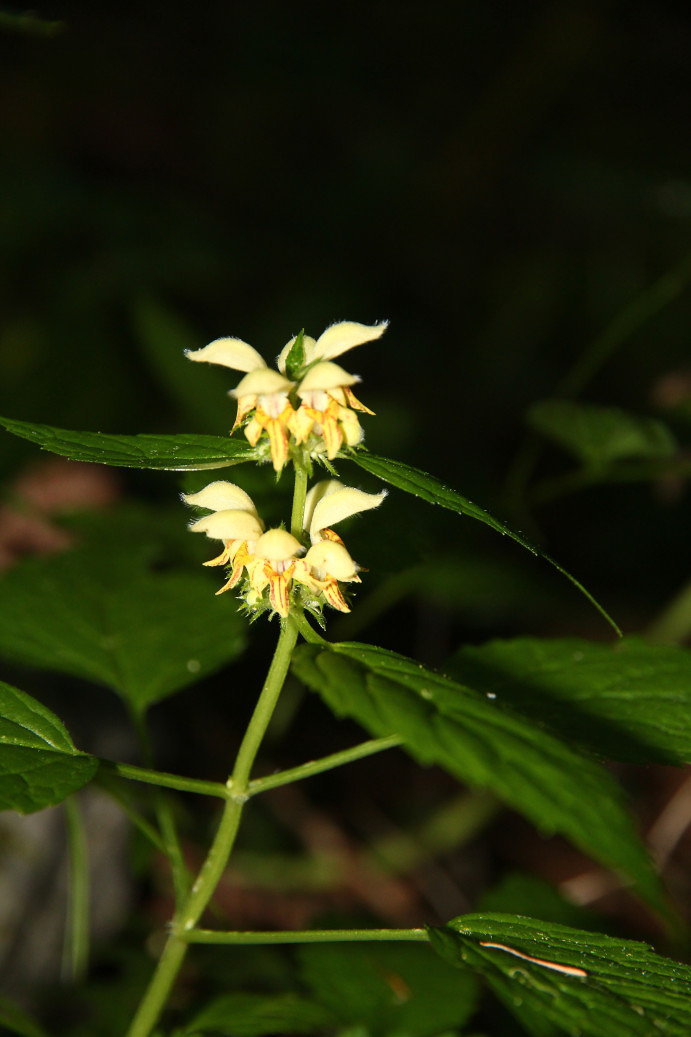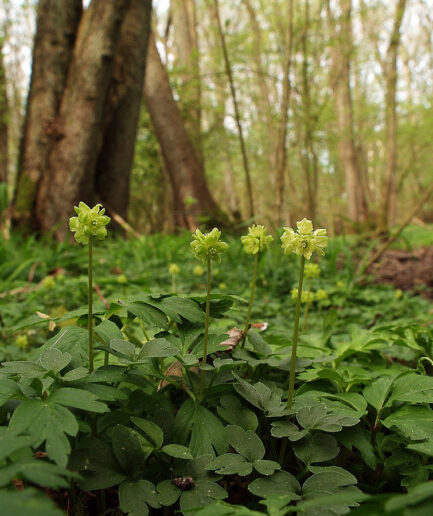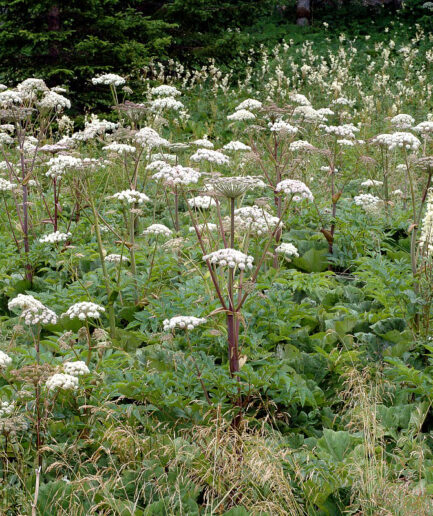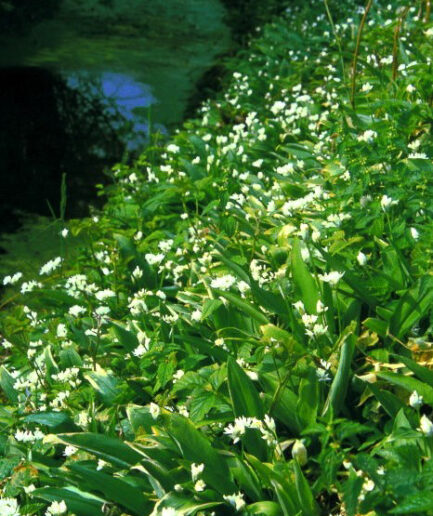Yellow Archangel
Scientific name: Lamium galeobdolon L.
Family: Lamiaceae
MORPHOLOGY
Growth habit and size: Perennial herbaceous plant. Height 25÷70 cm.
Stem: Quadrangular stems, often reddish, erect, sometimes with erect floral branches in the lower part, without basal stolons.
Leaves Lower leaves petiolate, elliptical-lanceolate; bracteal leaves often acuminate with coarsely toothed margins and more or less divergent teeth.
Flowers: The flowers are clustered in dense whorls (2-10) in the axils of the leaves and upper bracts (3-11 flowers). The flowers are bright yellow with a calyx divided into 2 lips, the lower lip trilobed with a central lobe spotted brown. It blooms from April to August.
Fruits and seeds: The fruits are 4 hard achenes.
DISTRIBUTION AND HABITAT
It grows throughout Italy except for the major islands. It prefers cool, shady, humid forests, from sea level up to 1,900 m.
USE
In folk medicine, this plant is used as a vulnerary (heals wounds), antispasmodic (reduces muscle spasms and relaxes the nervous system), depurative (facilitates the elimination of impurities), expectorant (promotes the expulsion of bronchial secretions), general resolvent, tonic (strengthens the body), and astringent (limits the secretion of fluids). Before taking any plant-based product (medicinal or non-medicinal) for therapeutic or similar purposes, it is always advisable to consult a doctor.
In cooking, the tips of the shoots can be used.
Photo: Kindly provided by Claudio Farinati



















